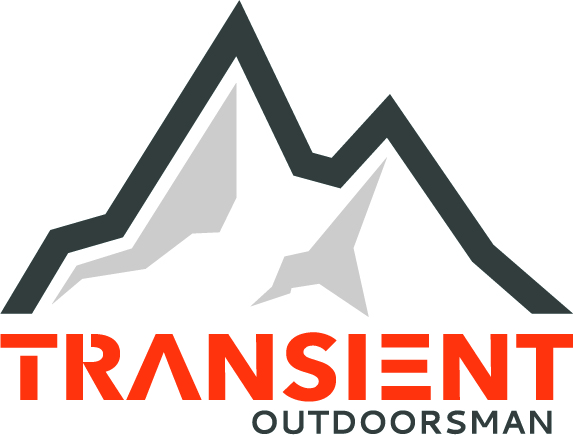Burris MTAC: Quality Battlefield Optic on a Budget
Guest blog by Ethan Balman. Balman is a former member of our U.S. Armed Forces, a retired law enforcement officer, firearms instructor, writer, teacher, and avid outdoorsmen. He holds a master’s degree in leadership and lives and works in Lancaster County, Pennsylvania with his wife and three children.
My own experience with Burris began last year when I purchased Rock River Arms’ excellent LAR-15 Predator Pursuit with the intention of setting it up as a semiautomatic precision rifle (SAPR) capable of engaging targets in close quarters (CQB) out to 600 yards with the 5.56 cartridge, not an easy task. I needed an optic that allowed me to keep both eyes open like an EOTech, Aimpoint or Trijicon reflex sight, but also allowed for reasonably precise shot placement on threats at greater distances. The optic must be tough as nails, simple to use, affordable, and above all else, reliable. Enter the Burris MTAC 1-4x24mm rifle scope.
Overview
Make no mistake, the MTAC is a combat optic, so if you’re looking for fine crosshairs found in F-Class and Benchrest competition circles, keep moving. However, if you’re in the market for a quality, no-nonsense combat optic that does it all, look no further. The MTAC 1-4x24mm riflescope offers superb glare-resistant glass and a sleek, snag-free profile perfect for 3-Gun or CQB. With its high-performance glass, solid 1-piece 30mm tube and internal double spring-tension assembly, this MTAC Riflescope can handle the harshest shooting environments without a problem, with plenty of money left over for ammo!
Burris utilizes aircraft grade 6061 T6 aluminum prized for its unparalleled strength and durability. The 30mm one-piece tube offers greater strength than the standard 1-inch tube that competitors use, which translates to greater internal adjustments, more light, and the ability to withstand the worst battlefield conditions an operator might encounter.
Size and Weight
At 11.3 inches in total length and weighing in at 14.5 ounces, not including Burris’ excellent P.E.P.R. mount, the MTAC isn’t exactly the skinny boy among reflex sights, but when you consider that it’s only 2 to 5 ounces heavier than EOTech, Aimpoint, or Trijicon ACOG, and it offers the variable magnification of a scope, it really isn’t much of a sacrifice, especially considering it runs with or without batteries, thanks to the glass-etched reticle.
Reticle
My initial impression of the reticle was “busy,” but that was before I used it. Burris uses what they call the Ballistic CQ reticle, designed for competitive shooting, law enforcement, and military applications. It is both fast and accurate, and ideal for close-range tactical applications. Similar to the Styer AUG “donut of death,” the circular center is perfectly adept for ultra-fast engagement inside 25 yards, while the smaller aiming points provide trajectory compensation in 100 yard increments out to 600 yards for 5.56 and 7.62 cartridges depending on your load preference.
The Ballistic CQ reticle is calibrated for 50, 55, 62, 68, and 77 grain bullets in 5.56 and 150 and 168 in 7.62x51. My own testing found this to be accurate, and displayed excellent consistency across a wide range of ammunition from cheap target loads to high-end match grade ammunition.
This system is ideal for an operator out in the field who may have little time to make elevation/windage adjustments. Simply zero your rifle in at 100 yards and then make use of the built-in hold-overs for everything beyond that. It’s fast, simple, and puts rounds on target quicker than the other guy, whether you’re competing or fighting for your life.
That said, the reticle obscures more target area than I care for at greater distances. The center dot measures 2.3 minutes of angle (MOA), which translates to an area about 2.4 inches at 100 yards. While that’s smaller than the 4 MOA dot in some Aimpoints, it’s still a whole lot bigger than a standard crosshair. While this isn’t a deal breaker, it does limit the ability to make precise shots, but more than serviceable for the combat conditions this scope was designed for.
Additionally, a trio of “T”-shaped bars appear surrounding the central aiming point, extending away from center in both directions and directly above center. The T bars serve to draw the eye’s attention to the top/center dot for fast, reflexive aiming necessary in close quarters while simultaneously assisting the operator with range estimation at greater distances. The distance between left and right T bars is 5 mils, or 18 inches at 100 yards.
Illumination
Burris does it right; the MTAC offers 10 different brightness settings, allowing the operator to configure the settings to his preferences and mission requirements. The rotary illumination switch itself is located on the left side of the adjustment turret, and is protected from any unwanted changes by a solid detent.
When you need to eliminate illumination immediately, there is an off position located between each setting allowing the operator to quickly go from on to off. Personally, I have mine set in the off position between the highest and lowest setting, allowing me to run the optic in bright daylight or blackout conditions with a simple twist of the dial in either direction.
Unlike the EOTech or Aimpoint, Trijicon’s ACOG does not require a battery to function, courtesy of both fiber optic and tritium elements. But this comes at a price. The MTAC is considerably less expensive and features a glass-etched reticle, ensuring reliable use even if the battery fails.
Battery Life
The MTAC is powered by single CR2032 watch battery. They are cheap, reliable, and ubiquitous. While I personally haven’t run my MTAC enough to weaken the battery, I can’t comment on how long it should last. However, Burris claims the battery in “Constant-On” should last in excess of 5000+ hours, with a shelf life of 5 years. Additionally, Burris has built in an automatic shutoff after two hours in order to preserve battery life in case you forget. Time will tell; in the meantime, experience has taught me that it is better to have and not need, than need and not have, which is why I have added several spares to my Hogue OverMolded Storage Kit pistolgrip just in case Murphy’s Law rears his ugly head.
MOA Adjustments
The MTAC’s Low-Profile Adjustment Knobs are finger-adjustable, easy to grip, .5 MOA positive clicks, making adjustments simple and straightforward. However, you must first unscrew the cover caps before making any adjustments. This ensures you’ll never accidently change your adjustment, but also makes getting to your turrets a bit of work and increases the possibility of losing a cap out in the field.
Considering the design of the ballistic reticle, I don’t plan on making any field adjustments once my rifle is sighted in, so this really isn’t an issue for me, but may be for some. The clicks are very positive and have a distinct audible sound, removing any doubt an adjustment was made.
This particular scope offers 130 MOA adjustment for both elevation and windage. That’s 65 MOA in any direction, should the need arise. Keep in mind the .5 MOA translates into ½-inch at 100 yards. For example, if your rounds are impacting an inch low and 2 inches right of center you would need to come up 2 clicks and left 4 clicks based on the MTAC’s ½ MOA adjustments in order to be back on target at 100 yards.
Eye Relief
The MTAC offers an eye relief between 3.5 – 4.0 inches, ideal for the AR-15 platform where the operator wishes to add backup iron sights (BUIS). In addition to the clarity of its glass - which is excellent for a scope of this price range - the real secret to the MTAC’s speed comes from what 3-gun shooters like to call the “eye box”. The eye box is the area behind the scope which your eye can move around in while still seeing through the optic and getting a useable sight picture. Cheap optics with poor eye relief and low exit pupil numbers have small, awful eye boxes, making it hard to get on target quickly.
The MTAC’s eye box at 1x power is the largest and most forgiving I’ve seen in an optic of this type. Transitioning from a “low ready” position with my AR to my shoulder and on target was seamless. The big red ring pops into my field of view extremely quickly giving me an edge on the competition.
Magnification
The MTAC is a 1-4 variable optic with a 24mm objective, allowing the operator to zoom in and out depending on their preference and as the mission dictates, while the objective gathers enough light to remain clear even in low light environments.
That having been said, the 1x is not a true 1x, but something closer to 1.5x, although I doubt most users will notice the difference, and I personally didn’t find this to be a distraction when using this scope as a reflex sight.
Additionally, the MTAC utilizes a rear focal plan. This is a crucial feature for accuracy as the rear focal plane reticle design creates a situation where the amount of target area covered by the reticle is inversely proportional to magnification; as the magnification is increased, the amount of target area covered by the reticle is decreased.
Mounting
I opted to purchase Burris’ P.E.P.R. mount for my build. The one-piece cantilever mount with integral rings places the optic 2 inches farther forward to provide extra clearance needed for a night vision device (NVD), add-on magnifier, or long eye relief scope. The “Proper Eye Position Ready” mount also features built-in, two-slot rails on the tops of the rings for convenient mounting of reflex sights or other accessories. Each top ring strap is secured with 6 Torx screws to prevent recoil-induced slippage.
Available in both 30mm or 34mm and a quick detach (QD) mount or side locking bar, the P.E.P.R. locks on tighter than a bank vault to any Mil-Std-1913 rail. The 34mm mount features a built-in 20 MOA, allowing additional adjustments for elevation at extreme distances. Smooth contours and radiused edges give a streamlined appearance, reduce weight, and prevent snagging.
Warranty
Every Burris optic is covered by the Burris Forever Warranty. Burris will repair or replace your optic if it is defective and the warranty is automatically transferred to future owners should you decide to sell yours. There are no hidden repair or replacement charge, no warranty card needed, no receipt needed, and no questions asked! Simply contact their customer service, prepay the shipping charges, ship by mail, UPS, or other parcel service to Burris Company, Inc., 331 E. 8th Street, Greeley, CO 80631. Best of all, Burris will reimburse shipping back to you.
Bottom Line
I purchased the MTAC scope with P.E.P.R. mount and FastFire 3 for right around $600 U.S. dollars, making it a great value for the money. The scope can be purchased separately if you wish for about $200 less than the combo package.
In this man’s opinion, the Burris MTAC 1 – 4x24mm is a lot of scope for the money. It’s both fast and accurate. When the chips are down and time is a luxury, reach for the Burris MTAC, you won’t be disappointed.
Zero Your Turrets – T.O.
# # #










